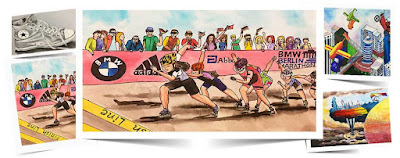The Evolution of Summer Paint Camps: Past, Present, and Future
The allure of a blank canvas, waiting to be transformed by a burst of color and creativity, is timeless. Yet, the spaces and environments where budding artists have sought inspiration and honed their skills have seen dramatic changes. Enter the Summer Paint Camps. Over the years, these camps have evolved, adapted, and reshaped themselves in response to societal shifts, technological advancements, and changing artistic landscapes. Let's embark on a journey through time, exploring the past, present, and future of these vibrant havens of creativity.
The Past: Artistry in Nature’s Lap
The roots of Summer Paint Camps can be traced back to the late 19th and early 20th centuries. During this period, a great emphasis was placed on the idea of the 'plein air' movement. Artists ventured outdoors, setting up easels amidst nature, capturing the essence of their surroundings in real-time. Camps of this era were more informal, often organized by groups of artists retreating to picturesque locations to immerse themselves in their work and learn from each other.
These early camps provided a unique blend of camaraderie, mentorship, and the raw beauty of nature. There were no structured lessons or rigid timetables, just a shared passion for art and a collective ambition to improve.
The Present: Structured Curricula & Diverse Offerings
Fast forward to today, and the concept of a paint camp has been transformed and institutionalized. Modern Summer Paint Camps are often meticulously structured, offering specific courses designed for different age groups and skill levels. From exploring watercolor techniques to dabbling in digital art, these camps are comprehensive hubs of learning.
Another key feature of contemporary camps is their inclusivity. Recognizing the diverse spectrum of artistic interests, many camps now offer hybrid programs, blending traditional painting with other art forms like sculpture, photography, and digital media.
Technology has also made its mark. Many camps have introduced digital art tools and software into their curriculum, ensuring students are well-equipped for the evolving art landscape. Moreover, with the rise of social media, campers can now share their creations instantly with a global audience, garnering feedback and building a digital portfolio.
The Future: Virtual Camps & AI-driven Artistry
As we gaze into the crystal ball, the future of Summer Paint Camps appears both exciting and challenging. One significant trend on the horizon is the rise of virtual paint camps. With advancements in virtual reality and augmented reality technologies, the next generation might attend paint camps in digital realms, painting in 3D spaces, and collaborating in real-time with peers from across the globe.
Another intriguing possibility is the role of Artificial Intelligence. While AI can't replicate human creativity, it can certainly aid it. Imagine AI-driven tools suggesting color palettes, predicting painting trends, or even providing real-time feedback to improve technique.
Despite these technological advancements, the essence of Summer Paint Camps will remain unchanged: a space for individuals to explore, express, and evolve as artists. As the canvas of these camps continues to expand and transform, one thing is certain – the spirit of creativity they foster will remain vibrant and alive.
In closing, whether in the past’s serene natural settings, today’s structured institutions, or tomorrow’s virtual realms, Summer Paint Camps have been and will continue to be sanctuaries for art lovers to come together, learn, and create masterpieces. As they evolve, so too does the world of art, ensuring a brighter, more colorful future for all.


.jpg)

Comments
Post a Comment